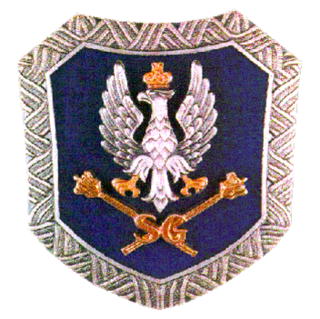 W
WArmed Forces Day, known also as the Feast of the Polish Armed Forces, is a national holiday celebrated annually on 15 August in Poland, commemorating the anniversary of the 1920 victory over Soviet Russia at the Battle of Warsaw during the Polish–Soviet War. Armed Forces Day is held in conjunction with the Day of the Assumption of the Virgin Mary, itself a separate public holiday. The event is marked by military parades, equipment reviews, showcases and remembrances by all branches of the Polish Armed Forces across the country. One of the most prominent events of the day is in the capital Warsaw, which hosts a large military parade through the city's center. Originally celebrated during the Second Republic, the holiday was barred by authorities during the communist era beginning in 1947, only to be revived again in 1992.
 W
WIn Polish Armed Forces, a certified officer in a military title assigned to an officer after graduation of the corresponding military school. In addressing, the title immediately follows the officer's military rank, e.g. "płk dypl.".
 W
WThe Military Gendarmerie is a military provost created in 1990 in Poland as an independent part of the Polish Armed Forces.
 W
WA military identity card is an identity document issued to soldiers of the armed forces of various countries.
 W
WMilitary Information Services was a common name for the Polish military intelligence and counter-intelligence agency. The agency was created in 1990 after the Revolutions of 1989 ended the Communist regime as a merger between the former Communist agencies Internal Military Service and the Second Directorate of General Staff of the Polish Army. The combined agency was originally known as the Second Directorate for Intelligence and Counter-intelligence ; it was renamed to WSI in 1991. At first, all commanding and upper-level officers—and most of the employees—had direct personal and career links with the former Communist regimes of Poland and the Soviet Union.
 W
WMinistry of National Defense is the office of government in Poland under the Minister of National Defense. It is responsible for the organization and management of the Polish Armed Forces. During the Second Polish Republic and World War II it was called the Ministry of Military Affairs. Ministry budget for 2019 was 45.4 billion PLN.
 W
WNATO forces in Poland consist of both Polish and allied units. Poland joined NATO in 1999.
 W
WPolish General Staff, formally known as the General Staff of the Polish Armed Forces is the highest professional body within the Polish Armed Forces. Organizationally, it is a part of the Ministry of National Defence. It was created in 1918, and for a time bore the name Main Staff. Currently the position of Chief of the General Staff of the Polish Armed Forces is LTG Rajmund Andrzejczak, since 2 July 2018.
 W
WThe Polish zone in Iraq or the South Central / South Center / Central South / Center South zone / sector was created in 2003 when Iraq was divided into four zones. The South Central zone covers the Al-Qādisiyyah Governorate, Karbala Governorate, Babil Governorate and the Wasit Governorate. The region had a population of about 5 million spread over 65,632 km². It was the area of responsibility for Multinational Division Central-South under Polish command.
 W
WThe Polish Riflemen's Association known as Związek Strzelecki formed in great numbers prior to World War I. One of the better known associations called "Strzelec" was a Polish paramilitary cultural and educational organization created in 1910 in Lwów as a legal front of Związek Walki Czynnej, and somewhat reinstated in present-day Poland in 1991, after the fall of communism.